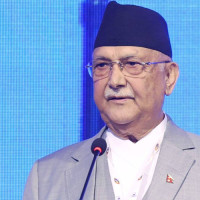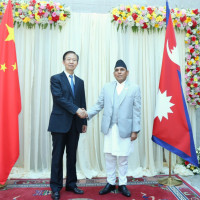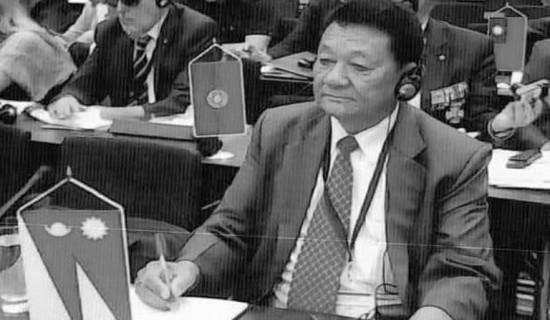- Saturday, 17 May 2025
Drone Technology Transforming Warfare
Drones, also known as Unmanned Aerial Vehicles (UAVs), have been used in warfare for decades. But never have they been as central to warfare as they are today. With the outbreak of the Russia-Ukraine conflict, pilotless, radio-controlled drones exploded in deployment. What once only performed a specialised function suddenly became one of the most important and widely used weapons on the battlefield. Every day, both armies publish videos on social media demonstrating how drones as inexpensive as a few hundred dollars can pulverise costly units of tanks worth millions of dollars.
As both sides increasingly deploy drones, the conflict is getting deadlier than ever. Gone is the era when tanks and trenches dominated the battlefield. Unlike in the World Wars, where artillery and missiles did most of the damage, today, deadlier casualties are inflicted by drones laden with explosives, accounting for more than 70 per cent of the deaths and injuries. The dramatic shift is transforming the way wars may be fought in the future.
So why and how did unmanned aircraft come to rule the battleground?
Hidden from view
Drones take off from improvised platforms several kilometres from the front line. Powered by cutting-edge technology, intelligence, and tactics, drones can be operated from a distance, hidden from view, obviating the need for humans to be present on the frontline. They aren’t hard to make because they have no complex parts, and the engine, sensors, communication module and software can be sourced locally. Drones cost much less than other weapons of equivalent power or range, and they reduce risk to their users who operate remotely, typically beyond the reach of many weapons that otherwise might retaliate.
Their charm is enhanced by the fact that they are available immediately and do not require to be built for a special purpose. Some long-range drones can even hit a target with explosives hundreds of kilometres away, crashing into weapon-making factories and army bases deep into the enemy’s territory. Moreover, a drone, equipped with a camera, sensor, radar and a communication module, can be sent into faraway terrain to monitor the enemy position and precisely locate the position of a target. Knowing this situational awareness makes it easier to hit the high-value target in a way that minimises collateral damage. This feature is attractive in a war where a target needs to be hit in densely populated cities.
Additionally, drones powered by artificial intelligence (AI) are increasingly being used to track enemy forces, guide artillery and bomb targets. Another selling point of drone use is that they can swarm the front lines and overwhelm the military installations of the enemy army, weakening their defence system. In a protracted and large conflict, cost is key. The fewer resources used to destroy a target, the better. And drones possibly serve this purpose better than any other military equipment.
The pervasive use of such unmanned aircraft in warfare suggests that the quicker one is to adapt to the war, the quicker they can win the war, and with minimum casualties. Recently, the BBC reported that the world’s first drone war between nuclear-armed neighbours broke out in South Asia, between India and Pakistan. India accused Pakistan of launching a wave of drones and missiles towards military bases in Indian territory. As India, too, responded with drone attacks, Pakistan claimed to have shot down 25 Indian drones.
Invisible eyes
If this combat signalled anything, it is that the conflict is marching into a brave new age of drone warfare, where invisible eyes and pilotless precision strikes can determine the outcome of the war, as well as escalation and restraint. This was inevitable, given the extensive use of drones in combat worldwide. Unlike the Russia-Ukraine conflict, where the proliferation of drone attacks has meant catastrophic destruction, the impact in the India-Pakistan conflict remains limited.
Today, at least 118 countries are said to have drones in their arsenals, up from about 60 in 2010. As drones continue to shape the battlefield, those investing in and innovating the emerging technology in warfare are destined to get an upper hand in future wars. That said, given the unforeseen consequences war brings, and those bearing the brunt will be the ones who have nothing to do with the war: the civilians, children and women caught in the crossfire, preventing war is indeed always the best option. With so many wars being fought and both sides unequivocally failing to
prove themselves as winner, the world is tired of senseless wars. Only when peace is given the chance can humanity thrive in ways that
also make Mother Earth a better place to live.
(Basyal is a journalist at The Rising Nepal.)















